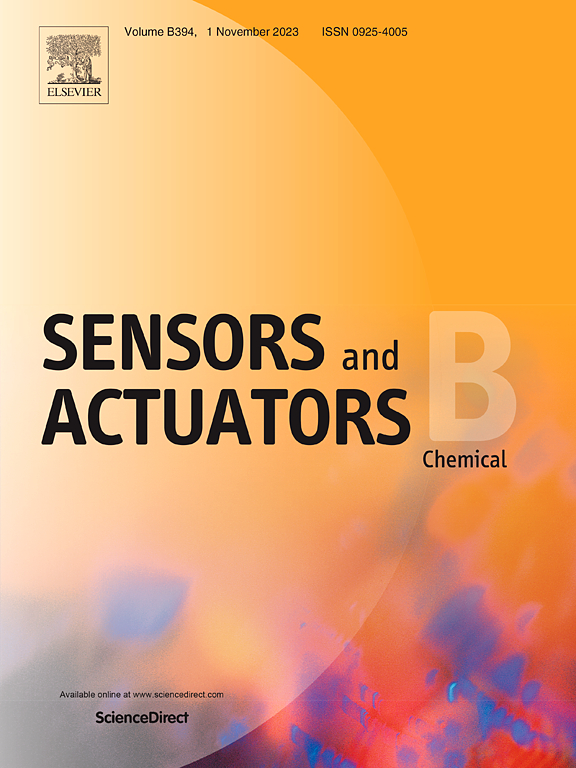Robust nanozyme with dense crystalline-amorphous interfaces for efficient detection of reactive oxygen species in saliva
IF 8
1区 化学
Q1 CHEMISTRY, ANALYTICAL
引用次数: 0
Abstract
Real-time monitoring of reactive oxygen species (ROS) concentrations in biological fluids using enzyme-catalyzed reactions to generate electrical signals holds promise for early diagnosis of various ROS-related diseases. However, challenges such as small sample volumes, low concentrations and the short lifespan of ROS hinders its translational application. Here, a phase engineered nanozyme with highly oriented dense crystalline-to-amorphous interfaces were synthesized and integrated into flexible sensors for trace-level ROS detections, achieving a limit of detection (LOD) of 42 nM (1.428 ppb) with only 13.5 μL sample volume and a high sensitivity of 1.971 mA·mM−1cm−2, surpassing traditional benchmarks. The outstanding enzyme-like activity of our engineered nanozyme is attributed to the highly oriented dense crystalline-to-amorphous interface. Systematic structure-dependent tests and multi-characterization analyses revealed that these dense crystalline-to-amorphous interfaces can effectively increase the density of the oxygen vacancy defects, crucial intermediates in the multiphasic redox reactions. Furthermore, in situ Raman spectroscopy indicated that the dense crystalline-to-amorphous interface promotes the phase transition from oxides to highly reactive hydroxyl oxides and stabilize the active phase throughout the Fenton reaction. The integration of carbon nanotubes (CNTs) with high conductivity and efficient charge transport properties significantly enhances the sensor performance. Real-time and accurate sensor responses to short-lived ROS, further validated by in-situ Fenton reactions and ESR analysis of inflamed patient saliva, highlights potential for long-term oral inflammation monitoring.
求助全文
约1分钟内获得全文
求助全文
来源期刊

Sensors and Actuators B: Chemical
工程技术-电化学
CiteScore
14.60
自引率
11.90%
发文量
1776
审稿时长
3.2 months
期刊介绍:
Sensors & Actuators, B: Chemical is an international journal focused on the research and development of chemical transducers. It covers chemical sensors and biosensors, chemical actuators, and analytical microsystems. The journal is interdisciplinary, aiming to publish original works showcasing substantial advancements beyond the current state of the art in these fields, with practical applicability to solving meaningful analytical problems. Review articles are accepted by invitation from an Editor of the journal.
 求助内容:
求助内容: 应助结果提醒方式:
应助结果提醒方式:


